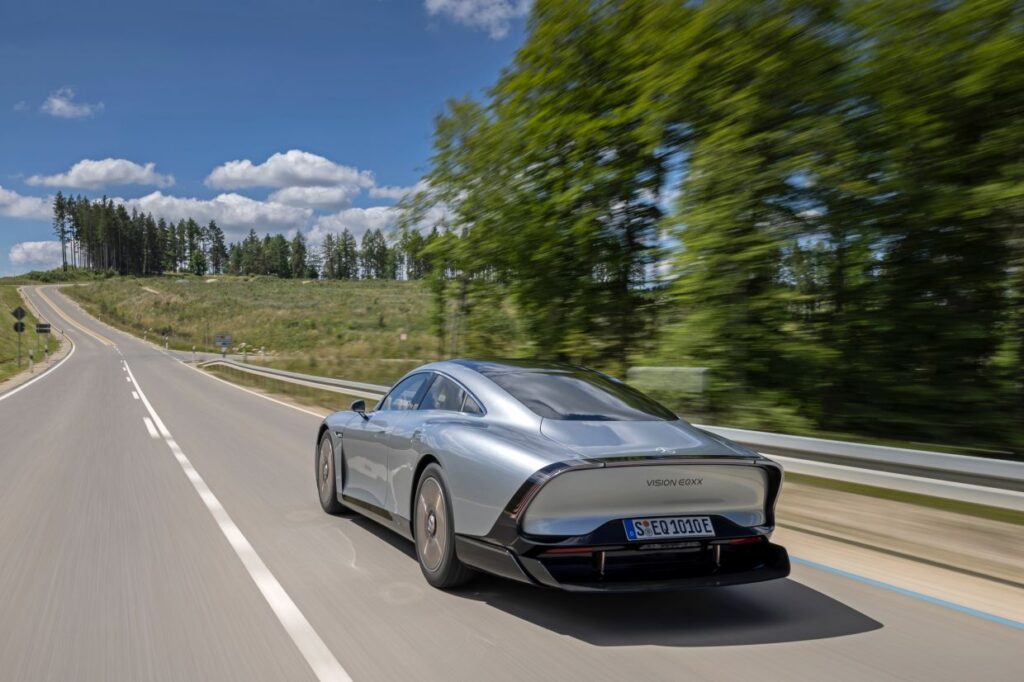Easing “range anxiety,” improving comfort and power – manufacturers of electric cars have a lot on their plate. But making the ecar of tomorrow ever better and faster also leads to ever greater power consumption. From Mercedes to Volkswagen, manufacturers know that they also have to tighten the screws on efficiency.
Faster, more powerful, more comfortable – competition is tough in the electric car market. The race for customer satisfaction has been leading to ever greater power consumption. But car makers are now fighting that trend by making their cars more energy efficient.
As Mercedes demonstrated earlier this year with its EQXX Vision study, consumption of less than 10 kWh per 100 kilometres is possible. During a long-distance test drive, the concept car used 8. 7 kWh/100km.
In comparison, a compact VW ID. 3 consumes an average of at least 14. 9 kWh/100km, according to the WLTP measurement method, while a BMW i3 burns through 15.
3 kWh/100km. When the air conditioning or the heating system is running, consumption even soars above 20 kWh. The strength of the Mercedes EQXX lies in its particularly aerodynamic body.
Some 62% of a vehicle’s energy is used to overcome air resistance while 20% is used by rolling resistance and only 18% is accounted for by the vehicle’s weight. “When it comes to power consumption, it’s important to improve the car’s aerodynamics first, then weight and finally the tyres. Only then come the electric motor and battery,” says Malte Sievers, development engineer at Mercedes.
Teardrop-shaped bodywork The EQXX engineers perfected the concept car’s aerodynamics in the wind tunnel. The result is a teardrop-shaped vehicle with a drag coefficient of just 0. 17.
However, some of the car’s advanced features can’t be implemented in a production vehicle. A smaller frontal area and a body shape that slips through the air smoothly means a low drag coefficient and thus lower fuel consumption. “Teardrop-shaped bodies, with the roof dropping off at the rear as in the Tesla Model Y or the Mercedes EQXX, are very efficient,” says Haydar Mecit, professor for urban energy and mobility systems at Bochum University of Applied Sciences in Germany.
Flowing shapes are therefore becoming a trend. However, aero efficiency is not just about the body, the design of the wheel rims also plays a role, for example. “Visually closed wheels minimise turbulence and thus consumption,” Mecit says.
Manufacturers are also relying on special tyre compounds to reduce rolling resistance. Lightweights need less juice “The lighter a vehicle, the less kinetic energy it has to use when starting up,” Mecit says. Besides using lighter steel or aluminium in the bodywork and chassis, most of the potential for weight reduction lies in the battery.
Modern electric batteries weigh an average of 700 kilograms. “In the next five years, the energy density will continue to increase and the weight of the battery is expected to drop by 20 to 30%,” Mecit says. Whereas in previous ecars 90% of the car’s energy reached the wheels, in the Mercedes EQXX that’s improved to 95%.
And 5% more efficiency means a larger range or a smaller, lighter battery. Tightening the screws Jens Obernolte, head of energy and weight management at Volkswagen, is responsible for power consumption in the VW ID series. For the successor to the current ID.
3, the company is aiming to reduce the weight by some 5% and lower energy consumption by up to 20%. To achieve this Volkswagen is planning to increase the efficiency of the powertrain, aerodynamics, thermal management, braking system and energy recovery, making small changes to the overall vehicle and not just one component, according to Obernolte. Meanwhile, thermal management doesn’t affect the range, but drivers notice it in everyday life when they use the air conditioning or heating.
Volkswagen is planning to increase the energy density of the battery in the next generation. According to Obernolte, reducing power consumption to less than 10 kWh/100km could be achieved over the next 10 years, but only for cars with lower frontal profiles. Unlike SUVs, these can be optimised aerodynamically.
– dpa.
From: thestar_my
URL: https://www.thestar.com.my/tech/tech-news/2022/08/22/saving-power-ecars-of-the-future-will-be-streamlined-lightweights
